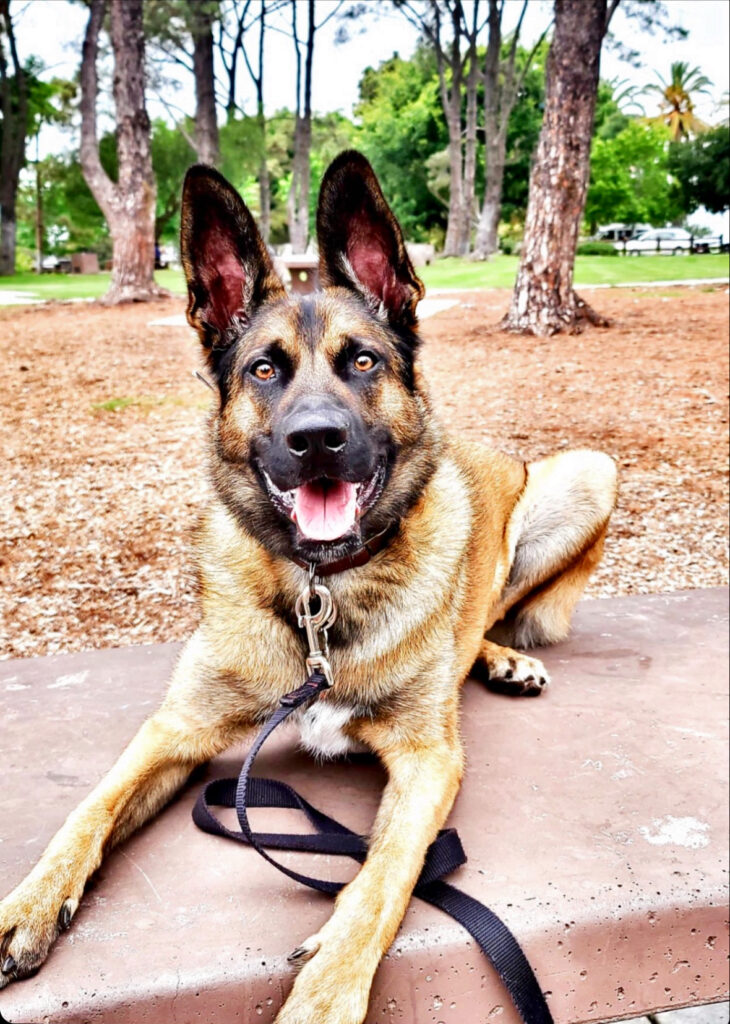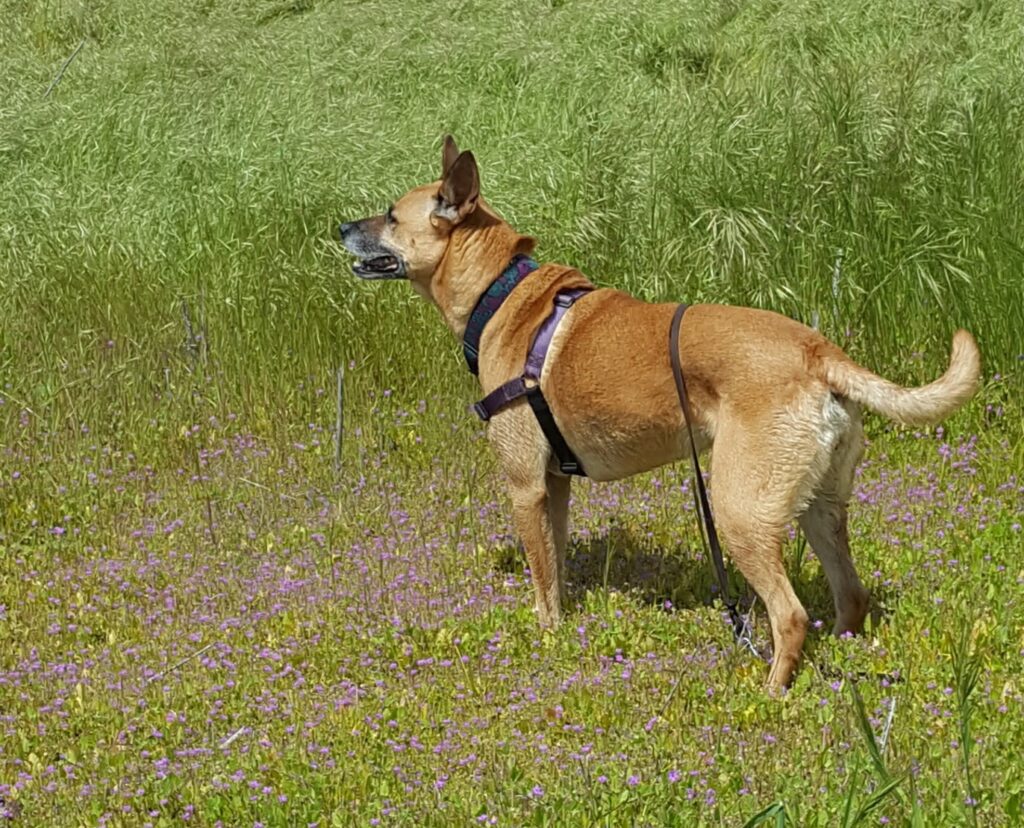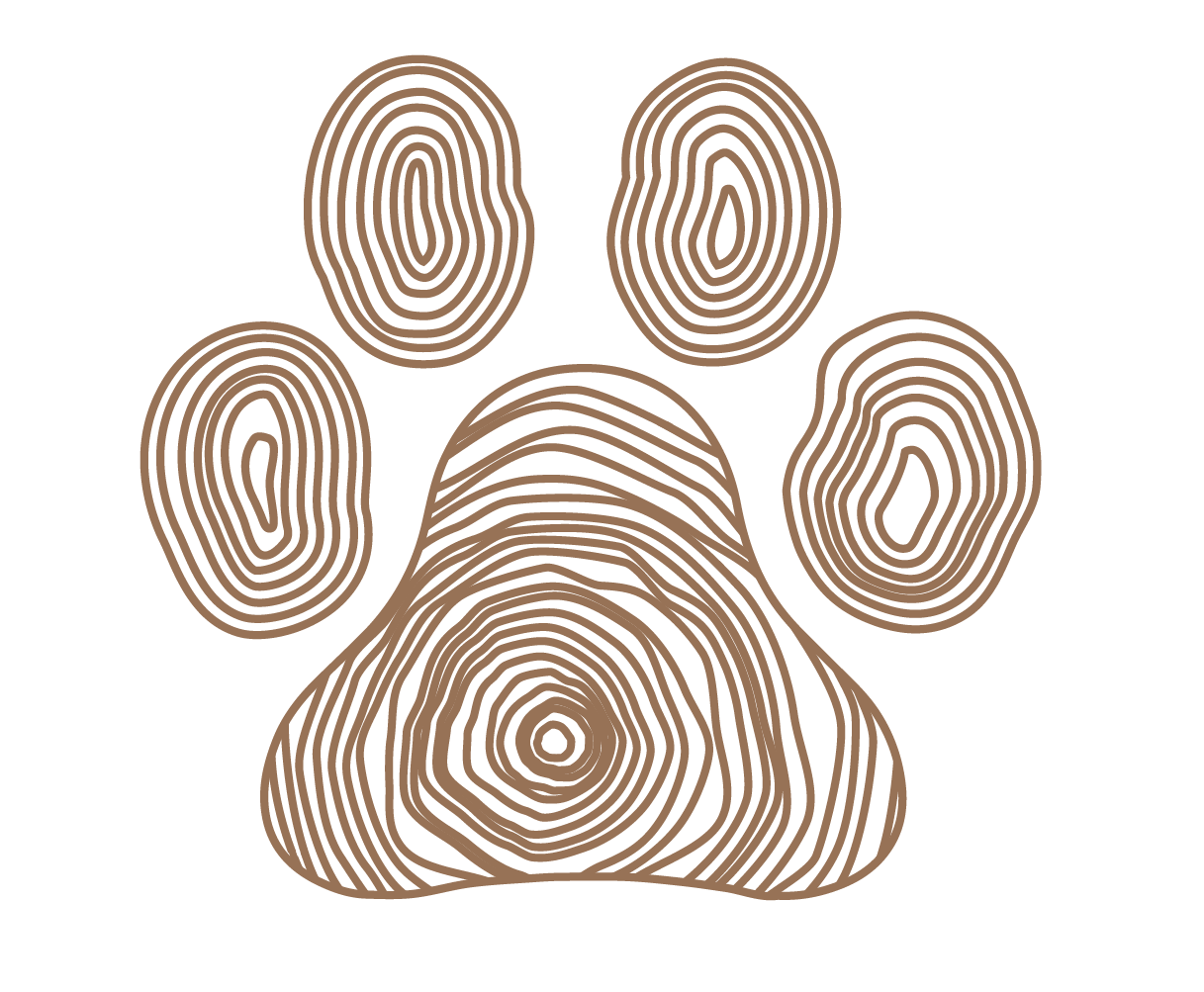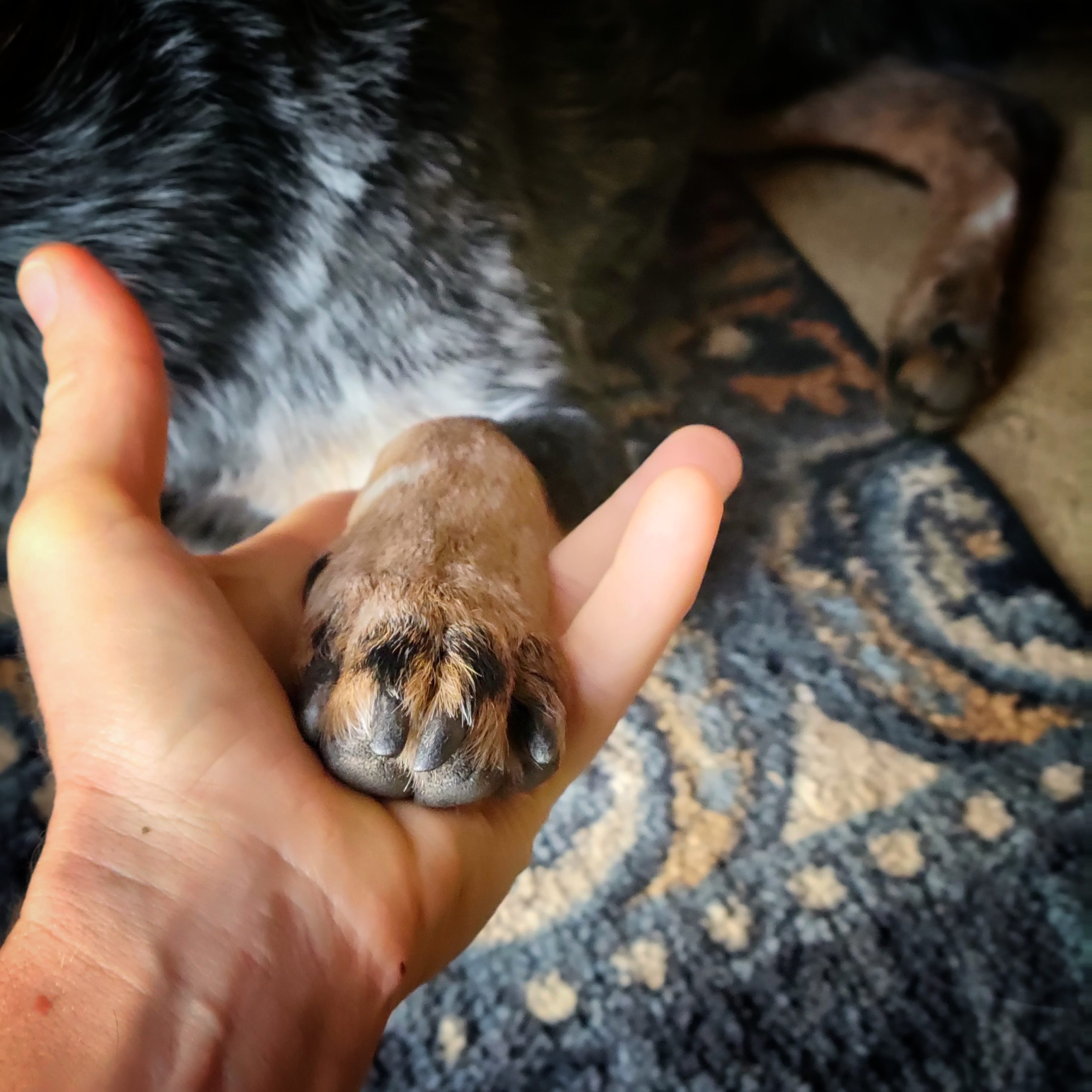As many of you already know, Shine, my oldest dog, has a tumor in her lungs. It showed up on an X-ray that I requested because her breathing had been off recently.
Shine is dying. It might not actually be the tumor that causes her death (or, more likely, the reason I decide to humanely end her life), it could be her kidneys failing. It could be her ability to stand and walk. She has a few health issues going on and depending on the speed that the tumor grows, something else may get to her first. She’s old: 14 years and 6 months at the time I write this. She is dying.
But here’s the thing: she always was.

The discovery of the tumor hit me like a punch in the gut, it somehow made her mortality more real to me. We all know intellectually that our dogs will die, but the immediate and pressing truth of that somehow still comes as a shock.
I believe there are two kinds of knowing: there is knowing something to be true intellectually, and there is knowing something to be true deep in the marrow of our bones.
I always knew that Shine would die, but the bone marrow truth didn’t hit until the tumor was revealed. Now my body felt the reality of the truth that was always there: she was going to die.
She is sitting up on the couch looking at me as I type this. I say “Hi, Beautiful,” with a bittersweet laugh. I love this dog. She is dying.
In the days that followed finding the tumor, I went into a knee-jerk emotional response of wanting to cater to Shine’s every desire and impulse because she was dying, because I wanted to make her as happy as I could. Because the end felt SO CLOSE and I wanted her to have all the joy.
And then I wondered why I hadn’t felt that way for the past 14 years.
Our dogs (and, lest we forget, every single other living creature on this planet, ourselves included) could die any day. My first cat had a heart attack and died without giving me two weeks’ notice; he just walked out on the job of being my cat. Kisa, my first dog, showed me that her heart was failing but gave me less than 24 hours to come to grips with that fact and make a difficult choice for her.
Accidents happen. Organs fail. Illness and death may interrupt our lives with our dogs with little to no time to “spoil” them the way we might want to.
My friend Sandy, who has an ineffably huge heart, fostered a dog for what felt like forever. Darla was a funny, quirky, bully-breed mix. She was in foster care with Sandy for ages, then Sandy and her partner gave in and adopted her. After a short time as an “official” member of their family (and after Sandy and Matt forked out for a very expensive cranial cruciate ligament repair surgery for her), Darla ate something weird (she was ALWAYS eating something weird!) that caused something to happen. Sandy says, “To this day we don’t 100% know what happened, but we’re pretty sure she had eaten some shoelaces that caused damage in her stomach and potentially caused her to go into sepsis at the end (that was the vet’s best guess).” She went into cardiac arrest before they could even operate.

Sandy and Matt didn’t get a chance to “spoil” Darla, they didn’t get to know what was coming. Does that matter?
To whom?
I believe that most dog parents have a (possibly unarticulated) idea of the best possible last day and moments for their dogs—some sort of walk or play at the dog’s level of interest and ability, all the treats and snacks, all the cuddles and belly rubs (if they’re into that sort of thing), and then a nap on the comfiest bed during which they release that long, soft, last exhale. No vets, no pain, no needles, no fear, and no regrets or remorse for the human.
This is a fantasy.
One of the shelters where I worked would often allow dogs who were going to be euthanized a “spoil period” of 24 hours for staff and volunteers to spend time with the dog, feed them cheeseburgers and chicken nuggets, and help them enjoy the last day of their lives, maybe a little more than they’d enjoyed all the ones leading up to this one (or at least since entering shelter care). At this particular shelter, dogs who remained behaviorally and medically “adoptable” were able to stay in care indefinitely—euthanasia was reserved for dogs with significant behavioral or medical concerns—so the added spoil time didn’t change the dog’s chance of survival, it was just to tack a day of pure pampering onto the end of the dog’s life.
Who is this spoil period for? Is it for the dogs or the people? Does a sudden increase in fun, snacks, and affection really take the sting out of death? For the dogs or the people?
In the shelter world, quality of life is an important and constant consideration, and if a dog’s life is extended by a full day, that means one more night spent in a kennel, surrounded by stressed, fearful, barking dogs. Is that worth the cheeseburgers? Or is it more important to make sure that the staff and volunteers who are at high risk for compassion fatigue and burnout get the opportunity to say goodbye, maybe find a little more peace for themselves with what is about to happen by being able to say, “I did this thing for the dog, I made their last day more pleasurable.”
Are there times when a life was extended to the detriment of the animal but to the benefit of the caregivers?
Yes, without a doubt.
Is that a fair trade-off if it means that they, the humans, will be able to avoid burnout and continue to provide care for other animals at a higher caliber or for a longer period?
Is that last day of any value to the dog?
Darla had an unknown past, ended up in a shelter, then a loving foster home where she became a “foster fortune” for Sandy and Matt, and then a sudden and tragic death.
Do we add that up to a number value? Bonus points for ending up with Sandy and Matt but minus points for tragic death? Is that how it works? If she had a final few days of endless treats and play would the final sum be different? For her? For them?
Was there anything lost by not having time to prepare for the end of Darla’s life*? Is there anything to gain when we can curate the end of our dogs’ lives?
When we spoil (And what a word that is! Something to dissect at another time.) our dogs who are at the natural or unnatural end of their lives, what are we really doing?
Are we wrapping up our dogs’ lives like presents when we engage in these final acts of devotion? Are we taking whatever is already there, the life already lived, and putting nice paper and a bow on it? Is this final bow-tying an attempt to give a last gift to our dogs or an attempt to feel like we have some control over the uncontrollable?
When I think about the changes I started making in my life with Shine now that the finish line was in sight, were they for her or for me?
A day or two after learning about the tumor I was eating a meal and felt a PUSH to share my food with Shine. That’s not something I do. I am all about sharing when I’m preparing a meal, but once it’s plated I do not offer tidbits to the dogs. This is a personal boundary I adhere to religiously, which means that I always enjoy meals without the pack “begging” for food when I sit down to eat.
And then I felt that urge to dismantle my own firm boundary for Shine because I wanted her to have all the good things.
I stopped myself. I don’t know how long she has. It could be two months, it could be much longer than that depending on how fast the tumor grows, how her joints, her organs, and her mind hold up. It could be another year.
Do I want a dog who expects snacks from the table for a year?
I do not.
Does that mean LESS JOY for Shine?
Not really, because she never expected table-treats to begin with, but I know that I’m withholding something from her that she would enjoy.
What is the value of the joy that could have been but wasn’t?
What is the value of last-minute joy?
What is the value of last-minute joy compared to a rich and joyful life, regardless of its length?
I know a wonderful couple, Morgan and Joe, who recently lost a very young dog—he was only 2—to sudden and unexplained liver failure. I’m thinking of them and Ace a lot as I write this.
They got no warning, no, no time. The extent of “spoiling” they were able to provide for him was small, but it was still a gift: “We were able to make one decision that made him more comfortable and it was opting to do the euthanasia right where he was, which was in the operating room area where customers never get to see. They wanted to do the procedure in one of the exam rooms, but our sweet boy was so sick that we wanted him to be comfy right where he was. That was such a great decision we were able to make.”
They couldn’t give him that fairytale last day, but would his loss have been less painful if they had been able to? Of course not. A curated death does not make the wounds in our hearts smaller or faster to heal. I doubt anything does that, but maybe knowing that your dog was well-loved makes the weight of the grief a bit more bearable. And Ace was well loved—his whole life with Morgan and Joe was wrapped in love and care—both felt and expressed. But his death was painful, for him and his family.

Darla didn’t get that soft ending either; does that make her death more tragic or her life less rich? Because she didn’t get a few weeks of Puppuccinos, extra walks, or bonus snuggles as a tradeoff for impending non-existence?
Will Shine’s death be more painful for me or for her if I don’t find some way to get some horse shit for her to roll in one last time before she goes?
Here are the root questions behind all these other questions:
When and why do we prioritize our dog’s happiness over our own convenience and preferences?
We pull out all the stops when we know a dog has just a few days to live. When it’s a few weeks to a month or so, we make a lot of concessions. What about when it’s 6 months or a year? When and why do the scales tip from human preference and convenience to canine joy or vice-versa?
For Shine, I filled up her kiddie pool a few extra inches, because the increased amount of wet dog mess in the house is totally worth her happiness. Was that not always the case? Did anything change?
I don’t have a clear answer. I have some murky thoughts.
The big deep question is what are you willing to sacrifice for your dog’s joy? Time? Clean floors? The cost of a Bark Box subscription? Hair and dogdirt on the couch or the bed? What feels like a COST to you, what are you willing to pay? What do the stakes have to be for you to pay that price?
And our dogs will never know that we make these choices. They will never know the calculations we make to determine if we can literally or figuratively afford pricey vet care, the time to drive to that park they love, the discomfort we feel when a 25-pound dog somehow takes up 85% of a queen-size bed. They will never know what could have been, they are only experiencing the moment.
The scales tip in our minds. When we feel we have infinite time with our dogs (we don’t) we are less likely to make sacrifices of time, money, and convenience to get through each day in a status quo that we are satisfied and comfortable with.
When we know that there is a finish line in sight, depending on how close that finish line is, the scales will tip more or less heavily towards dog-joy.
But there is always a finish line, even if we don’t see it approaching.
Are you living with your dog right now in a way that would cause you some regrets if tragedy struck tomorrow?
Think about your last walk with your dog. If you had known it was The Last Walk you would take together, would you have done anything differently? Would you have allowed more time to sniff? Taken a different route that your dog likes more? Tugged on the leash a little less or been less frustrated?
Look, I don’t have any answers here. This is a very personal question about what feels right and true and warm to you.
I’m feeling the shift of the scales in my heart every day. On the days that Shine coughs a bit more I am more generous with her, kinder and softer. After the few occasions that she’s had mobility issues, stumbling and taking a minute or two before she seems able to use her back legs, I treat her with greater tenderness and care. But doesn’t she deserve that same amount of kindness and manifested love every damn day regardless of her physical health?
“You see this goblet?” asks Ajahn Chah, the Thai meditation master. “For me this glass is already broken. I enjoy it; I drink out of it. It holds my water admirably, sometimes even reflecting the sun in beautiful patterns. If I should tap it, it has a lovely ring to it. But when I put this glass on the shelf and the wind knocks it over or my elbow brushes it off the table and it falls to the ground and shatters, I say, ‘Of course.’ When I understand that the glass is already broken, every moment with it is precious.”
~ version by Mark Epstein (from Thoughts Without a Thinker: Psychotherapy from a Buddhist Perspective)
Here are the changes I have made:
- More generous with the “fancy food” that Shine requires before she’ll happily eat her meals
- More water in her kiddie pool
- Found a Sniffspot with a big pond where she can swim
- Allowing longer sniffs on our walks
- Created a category in my budgeting software to save for the cost of at-home euthanasia and private cremation (around $600 for a 50lb dog)
Here are the things I am planning as we get closer to The End:
- Getting ahold of some horse poop for her to roll in/eat
- More snacks. LOTS more snacks.
- Probably a change to her meals so she only gets her favorite foods—and take out the supplements that don’t taste good
- Take time off work to be home or out on ability-appropriate adventures with her
Let’s look at these lists:
My current changes are all in line with joy for Shine and are not significantly detrimental to my resources (time, money, patience, emotional energy) and are sustainable long-term.
The second list includes items that are of greater consequence to me or Shine’s health (don’t forget that she has renal issues, too!) and are not sustainable long-term.
These lists will likely grow and change as time passes and I see more ways to make Shine happier each day.
But why did I need a tumor to make me think about this?
Many years ago, I think it must have been 2006, I took a day-trip adventure with my first dog, Kisa, to Calistoga to see California’s Old Faithful geyser and explore the surrounding attractions. While we were walking through the petrified forest up there we crossed paths with an older German woman who approached me to talk about Kisa (not an uncommon occurrence given her enormous size and strikingly good looks). The woman reminisced a bit about her dog who had passed away. She looked me in the eyes and with so much softness and sincerity in her face she told me, “Enjoy every moment.” That moment, that directive planted a seed in my heart that has since rooted deep. I’ve shared that sentiment with others, told that story a number of times, and hopefully helped some people enjoy, or at least accept, moments with their dogs that might otherwise have felt neutral or unpleasant.
If I enjoy or accept “every moment” does that change my dog’s experience of their one wild and precious life? Can I change the world for my dog, make it softer, more joyful simply by embodying that mantra?
Yes, but it doesn’t get Shine any horse poop.
In the recovery community, there’s a phrase, “You can’t keep it unless you give it away.” In that context, it means in order to maintain your own healing/recovery/sobriety you must help others on their path. I believe this sentiment holds true for our lives with our dogs: we can not keep the joy and love they bring us unless we give it back to them.
Those final moments may or may not matter in the grand scheme of things. Whether the end is tragic and painful or carefully curated and peaceful may be significant or not when all (and I mean all) is said and done.
But I believe that when we are able to look back over the lives of our dogs, whether they were long or short and say, I performed my love actively, I expressed my gratitude for them in my small daily choices, I did not wait until time was almost up to offer love through gesture. I did not hold my love close, expressing it in words but rarely through action: I held out love with open hands to give back to them the joy and happiness they gave me with the gift of this shared life. When we can say those things at the end of our dogs’ days, then we know that we have loved them well and generously.
The practicalities of what generosity of love could look like are as unique as your dog. For Shine, when I choose to walk her past the fire station that has the patch of grass she loves to roll in, that is an expression of love. When I place a cat food garnish on her meals, that is an expression of love. When I buy one more damn supplement to support her failing body, that is an expression of love. When I check my own frustration at her demand barking for dinner, that is an expression of love. When I stop my writing to look up at her resting, walk over and offer gentle belly or ear rubs, that is an expression of love.
Right now I am living every day with the deep, bone marrow truth that this life, my beautiful Shine’s life, will end, and this deep knowing has changed the way I share this life with her for the better. The texture is softer; I am more gentle, I am more generous.
Is feeling death close at hand what we need to really show our dogs the truth of our love? What really matters?
Knowing that they will die, what really matters?
Love your dog well, every damn day. Let that love pour through your speech and your actions.
Enjoy every moment.
The glass is already broken.
And it’s all so beautiful.

*Sandy has noted that one thing she wishes she had done differently with Darla was to get more pictures of her, specifically more pictures of Sandy and Darla together—something that would have been possible if they had time to prepare. This is something for us all to take to heart, but also something to recognize as being just for the people and of no benefit to the dogs… unless the photoshoot includes really good refreshments.

